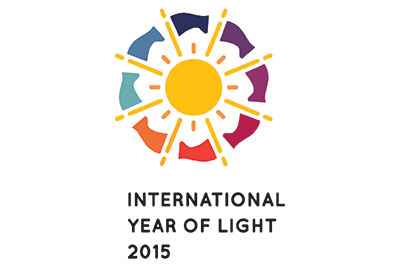L’Année internationale de la lumière – Pourquoi ?

Le 19 et 20 janvier prochain auront lieu les cérémonies d’ouverture de l’Année internationale de la lumière à Paris. Des événements auront lieu partout dans le monde. Des gens de tous les âges, de toutes les provenances pourront avoir une chance d’évaluer le rôle central de la lumière dans les sciences et la culture, et dans nos vies quotidiennes. En proclamant une Année internationale dédiée à la lumière et à ses applications, l’ONU reconnait l’importance de sensibiliser le public à la capacité des techniques utilisant la lumière à contribuer au développement durable et d’apporter des solutions aux grands défis contemporains comme l’énergie, l’éducation, l’agriculture et la santé.
L’événement regroupe plus de 100 partenaires de 85 pays différents, réunissant des scientifiques, des institutions scolaires, des technologies, des organisations sans but lucratif et des partenaires privés. L’objectif est de sensibiliser sur le rôle de la lumière dans le développement d’une économie durable et sa capacité à donner des solutions aux défis d’aujourd’hui.
« Une Année internationale de la lumière est une magnifique opportunité qui permettra aux décideurs politiques et aux parties intéressées de montrer le potentiel des technologies d’éclairage dans la recherche de solutions. C’est un moment privilégié pour faire connaître ces possibilités », selon John Dudley, Président de l’Année internationale de la lumière.
January 19-20 marks the opening ceremonies of the 2015 International Year of Light in Paris, but events will be taking place throughout the year and around the world. People of all ages and all backgrounds will gain an appreciation for the central role of light in science and culture, and as a cross-cutting scientific discipline that can advance sustainable development, say organizers.
IYL2015 is a global initiative adopted by the United Nations to raise awareness of how optical technologies promote sustainable development and provide solutions to worldwide challenges in energy, education, agriculture, communications, and health.
The event has more than 100 partners from 85 countries, bringing together many different stakeholders including scientific societies and unions, educational institutions, technology platforms, non-profit organizations and private sector partners. Its intent: to raise global awareness about how light-based technologies promote sustainable development and provide solutions to global challenges in energy, education, agriculture and health. Light plays a vital role in our daily lives and is central to linking cultural, economic and political aspects of the global society.
“An International Year of Light is a tremendous opportunity to ensure that international policymakers and stakeholders are made aware of the problem-solving potential of light technology. We now have a unique opportunity to raise global awareness of this,” says John Dudley, Chairman of the IYL 2015 Steering Committee.
A Nobel prizes awarded last fall served as a dramatic lead-in. The Nobel Prize for Physics was earned by Shuji Nakamura, Isamu Akasaki and Hiroshi Amano for the development of the blue LED. “In the spirit of Alfred Nobel the prize rewards an invention of greatest benefit to mankind,” said the Nobel committee. “Using blue LEDs, white light can be created in a new way. With the advent of LED lamps we now have more long-lasting and more efficient alternatives to older light sources.”
Among a long list of sponsors representing the lighting industry: Illuminating Engineering Society, International Association of Lighting Designers, International Commission on Illumination, International Light Association, Philips, Sylvania, The Society of Light and Lighting, UL, and others.
Find out more: http://www.light2015.org/Home.html. Also, watch for additional coverage of the 2015 International Year of Light in upcoming issues of EIN.












